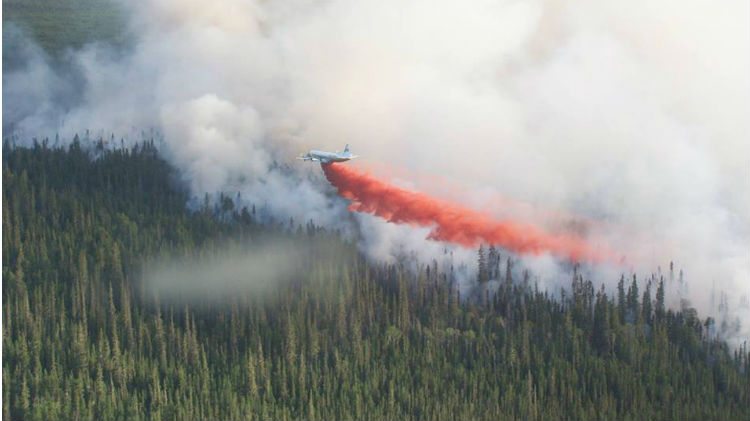There are no fires to fight in the Northwest Territories right now in what has been an unusually slow start to the territory’s wildfire season.
Richard Olsen, fire operations manager with the territorial government’s Department of Environment and Natural Resources, told reporters Monday that only two fires have been reported in the territory so far this year.
This time last year: NWT fire bans, road closure highlight start of fire season
The first broke out just 25 kilometers northeast of Yellowknife on May 14 but was declared ‘under control’ a couple days later.
The most recent one was reported on Saturday near Kakisa but was also extinguished shortly thereafter. It’s believed that both fires were caused by people.
In total, eight hectares of land have burned this season – a fraction of what had burned by this time last year.
According to Olsen, the territory’s 20-year-average is “six fires and a little over 2,000 hectares burned for this time of year.”
In the last two seasons, over 40 fires would have been reported by this point, burning over 6,000 hectares of land.
Read: Ground conditions dry in Yellowknife as fire season begins
Olsen says this season has been “quite quiet” so far but conditions are expected to dry up in the coming days, which could present a number of challenges.
“As we move into June, we expect that traditional drying and fire risk will increase as time goes on,” he said.
“One of the biggest things that we deal with for the fire season are those early season starts that escape initial attack in areas that are quite dry and require extended resources over a several-week period.”
At the beginning of the month, Olsen said ground conditions were especially dry between Yellowknife and Fort Liard.
“It’ll still take a substantial amount of rain to put the ground and water tables back to what we would consider normal,” he said.
“As a result, fires are going to burn deep and be a little more difficult to put out in those areas.
“We still are looking at being quite vigilant this spring in terms of assessing the risk and making sure that we man-up sufficiently so that we can try to get these potentially problem fires dealt with before they become an issue.”
Olsen says the relatively slow start to the season has allowed crews to complete necessary training without rushing into a busy season. It’s also allowed firefighters to travel south to Alberta to assist with efforts there.
The territory’s fire crews are expected to reach full strength by next week when a final crew based in Tsiigehtchic becomes available.





